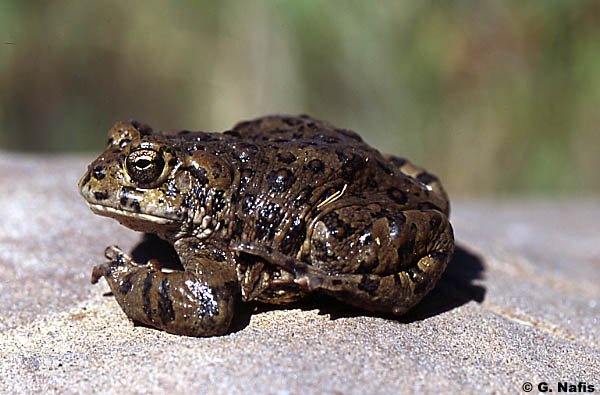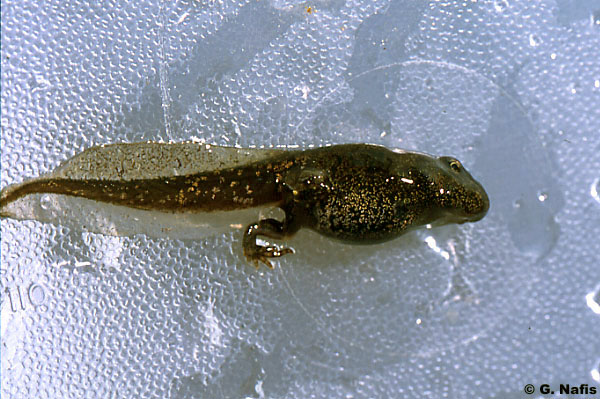|
REPTILES AND AMPHIBIANS California Toad
|
|
|
The California Toad (Bufo boreas halophilus) measures 2 - 5 inches in length. It inhabits a variety of habitats - marshes, springs, creeks, small lakes, meadows, woodlands, forests, desert riparian areas; from sea level to over 11,800 ft. They are active at night and remain underground in the daytime. Occasionally they can be seen moving about in daylight or resting at the edge of breeding pools in the breeding season. Parotoid glands and warts can secrete a poison to deter some predators. The call of the California Toad is a high-pitched plinking sound. The sound is similar to the peeping of a chick. A group of males calling has been compared to the sound of a distant flock of geese. Calls are given at night and during the day. Some herpetologists consider this sound a release call or encounter call, which is produced when males come into close contact, rather than an advertisement call, which is produced by a solo male in order to attract a female. Diet consists of a wide variety of invertebrates. Typical of most frogs, the prey is located by vision, and then a large sticky tongue is used to catch the prey and bring it into the mouth for consumption. Mating and egg-laying occurs from January to early July. Eggs are laid in still pools, ponds, or at the shallow edges of lakes. Fertilization is external. Eggs are laid in two long strings and hatch in 3 to 10 days. Tadpoles can often be seen in large schools. Tadpoles are dark brown, growing to about 1 inch before metamorphosing in late summer or early fall. Large numbers of metamorph toads can usually be seen in late summer along the shore. |
|
|
|


